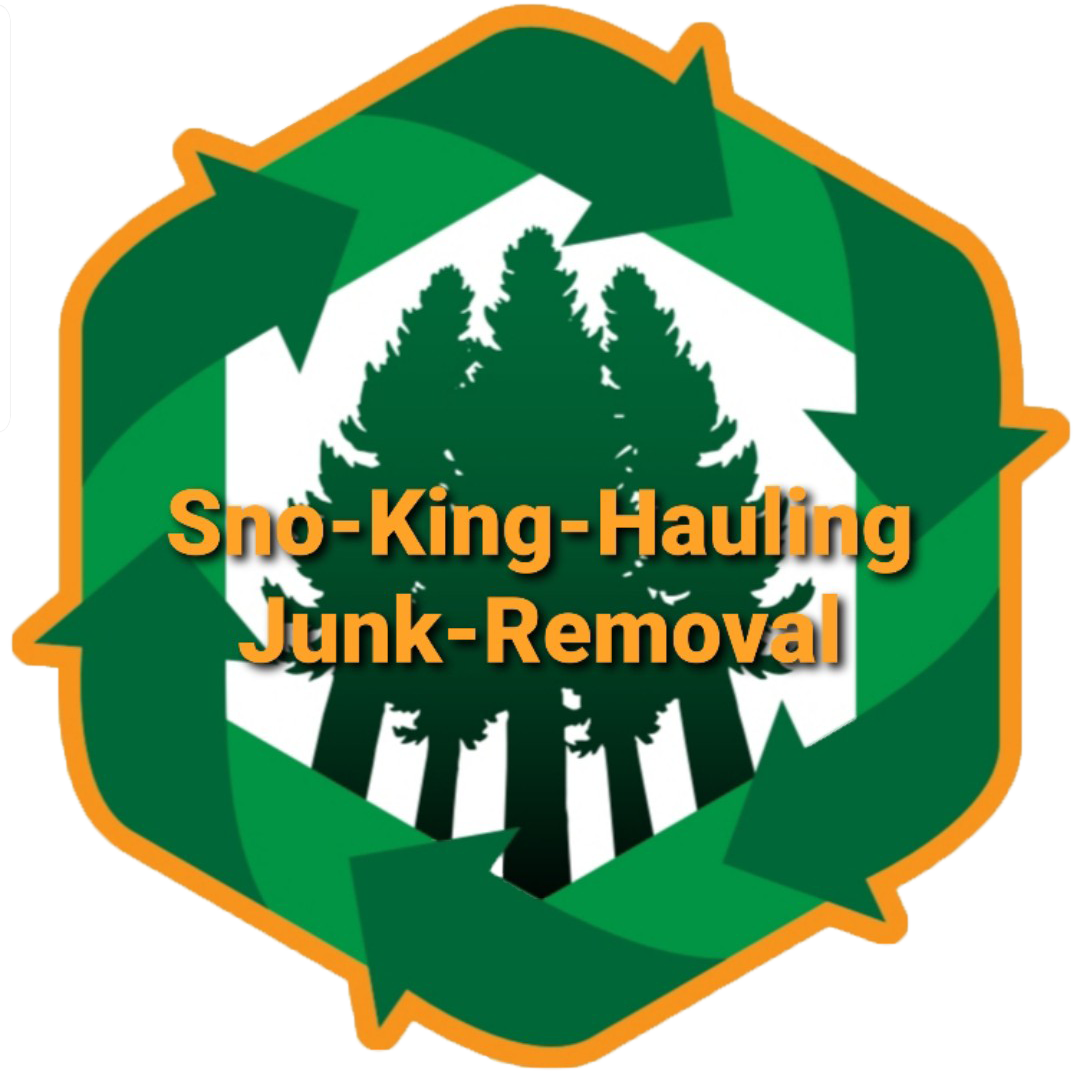
How to Handle a Foreclosure Cleanout: A Step-by-Step Guide
Handling a foreclosure cleanout can be a daunting task. Whether you're a real estate agent, investor, or homeowner dealing with the aftermath of a foreclosure, knowing how to manage a cleanout effectively is crucial. In this guide, we'll break down the steps involved in a foreclosure cleanout, highlight the necessary tools and strategies, and offer tips to make the process as smooth as possible.
What is a Foreclosure Cleanout and Why is it Important?
A foreclosure cleanout involves removing personal belongings, debris, and unwanted items from a property that has been foreclosed. This process is essential because:
- Safety and Health: Foreclosed properties often have accumulated trash and hazardous materials that can pose health risks.
- Property Value: A clean property can significantly improve its marketability and value.
- Legal Compliance: Proper cleanouts ensure compliance with local ordinances and regulations.
Steps to Successfully Conduct a Foreclosure Cleanout
1. Assess the Property
Before diving into the cleanout, take the time to assess the property thoroughly. This includes:
- Walkthrough: Conduct a detailed walkthrough to note the extent of the clutter and any hazards.
- Identify Valuable Items: Sometimes, foreclosed properties might contain valuable or personal items that need to be handled with care.
- Check for Damage: Look for any damage that might need repair before selling or renting the property.
2. Gather the Necessary Tools and Supplies
Having the right tools can make the cleanout process much more efficient. Consider the following:
- Protective Gear: Gloves, masks, and protective clothing are essential for safety.
- Cleaning Supplies: Brooms, mops, trash bags, and disinfectants are necessary for a thorough clean.
- Heavy-Duty Equipment: For larger items, consider renting a dumpster or hiring a truck.
3. Create a Plan for Sorting Items
Sorting items is a crucial step in a foreclosure cleanout. Organize items into categories such as:
- Keep: Items that may have value or need to be returned to the previous owner.
- Donate: Items in good condition that could benefit local charities.
- Dispose: Items that are damaged, broken, or of no value.
4. Dispose of Hazardous Materials Properly
Foreclosed properties might contain hazardous materials like old paint, chemicals, or asbestos. Ensure proper disposal by:
- Following Local Regulations: Different areas have specific disposal rules for hazardous waste.
- Hiring Professionals: For certain materials, it’s best to hire professionals trained in hazardous waste removal.
5. Hire a Professional Junk Removal Service
If the cleanout seems overwhelming, hiring a professional junk removal service can be a great option. These services:
- Handle Large Items: From old appliances to furniture, professionals can manage the heavy lifting.
- Ensure Proper Disposal: They know how to dispose of items responsibly, following local laws and regulations.
- Save Time and Effort: A professional service can speed up the process, allowing you to focus on other tasks.
Tips for a Smooth Foreclosure Cleanout
- Schedule Ahead: Plan your cleanout early to avoid last-minute hassles.
- Communicate Clearly: If you’re working with a team or hiring professionals, ensure everyone is on the same page about expectations and timelines.
- Take Breaks: Cleanouts can be exhausting, so take regular breaks to stay fresh and alert.
Common Challenges in Foreclosure Cleanouts and How to Overcome Them
- Dealing with Unwanted Personal Items: Contact the previous owner to return any personal items found. If they cannot be reached, follow local laws for handling personal property.
- Pests and Infestations: Foreclosed properties are often vacant for long periods, which can attract pests. Consider pest control services to handle any infestations before beginning the cleanout.
- Damage Beyond Repair:
If the property has significant damage, consider whether repairs are feasible or if a demolition might be more cost-effective.
Tools and Supplies Checklist for Foreclosure Cleanouts
| Item | Purpose |
|---|---|
| Protective Gloves | Safety during cleanout |
| Face Masks | Protection from dust and mold |
| Trash Bags | Collection of debris and smaller items |
| Broom and Dustpan | Sweeping and general cleaning |
| Heavy-duty Dumpster | Disposal of large items |
| Disinfectants | Sanitizing surfaces |
| Flashlight | Inspecting poorly lit areas |
| Moving Dolly | Transporting heavy furniture |
FAQs About Foreclosure Cleanouts
Q: Can I keep any valuables found in a foreclosed property?
A: Generally, any items left in a foreclosed property legally belong to the lender or new property owner. It’s best to consult with them before keeping any valuables.
Q: How long does a foreclosure cleanout typically take?
A: The duration varies depending on the property's size and condition but typically ranges from a few hours to a couple of days.
Q: Do I need a permit for a foreclosure cleanout?
A: This depends on your local regulations, especially if you plan to use large dumpsters or dispose of hazardous materials.
Encouraging Reader Interaction
What’s your experience with foreclosure cleanouts? Have any tips or stories to share? Drop a comment below! Also, if you found this guide helpful, feel free to share it on social media.
Furniture Removal
- Couch Removal
- Furniture Removal
- Mattress Removal
- Bed Removal
- Futon Removal
- Box Spring Removal
- Couch Removal
- Sofa Removal
- Love Seat Removal
- Sectional Removal
- Table Removal
- Chair Removal
- Office Furniture Removal
- Bulk Item Pickup
Appliance Removal
- Refrigerator Removal
- Appliance Removal
- Stove Removal
- Range Removal
- Microwave Removal
- Oven Removal
- Freezer Removal
- Dishwasher Removal
- Washer Removal
- Dryer Removal
Other Services
- Hot tub Junk Removal
- Dumpster Rentals
- Shed Junk Removal
- Hoarder house Cleanouts
- House Junk Removal
- Construction Waste Removal
- Garage Cleanouts
- Foreclosure Clear outs
- Eviction Clean outs
- Apartment Cleanouts
- Property Clean outs
- Estate Clean outs
- Hoarding Clean outs
- Yard Waste Removal
- Storage Unit Cleanouts
- Warehouse Cleanouts
- Commercial Junk Removal
OUR SERVICES AND AREAS
- Everett, WA
- Seattle, WA
- Marysville, WA
- Snohomish, WA
- Arlington, WA
- Mukilteo, WA
- Monroe, WA
- Granite Falls, WA
- Bothell, WA
- Whidbey Island, WA
- Stanwood, WA
- Edmonds, WA
Contact us
If you have any questions or need any assistance after business hours, please get in touch.
Phone
BUSINESS HOURS
- Monday
- -
- Tuesday
- -
- Wednesday
- -
- Thursday
- -
- Friday
- -
- Saturday
- -
- Sunday
- Closed
All Rights Reserved | Sno King Junk Removal
